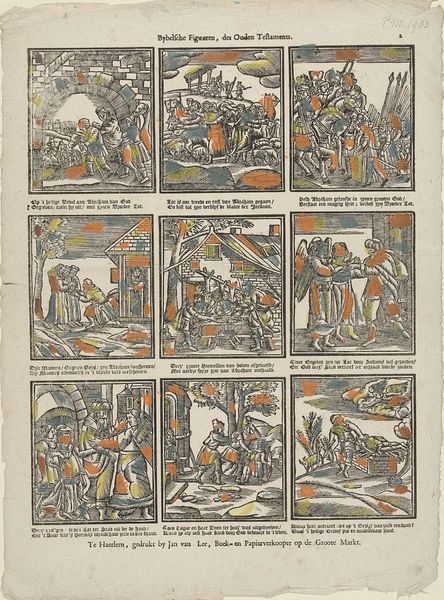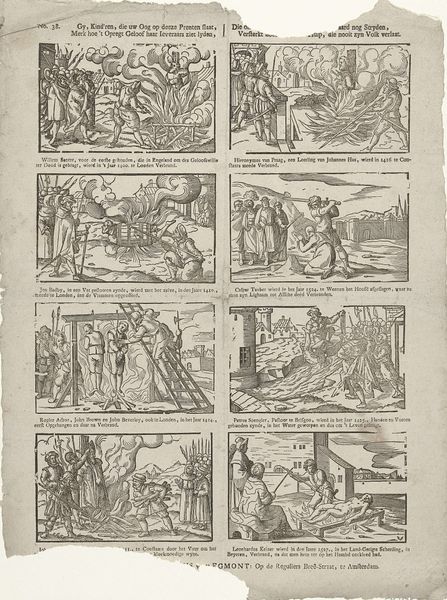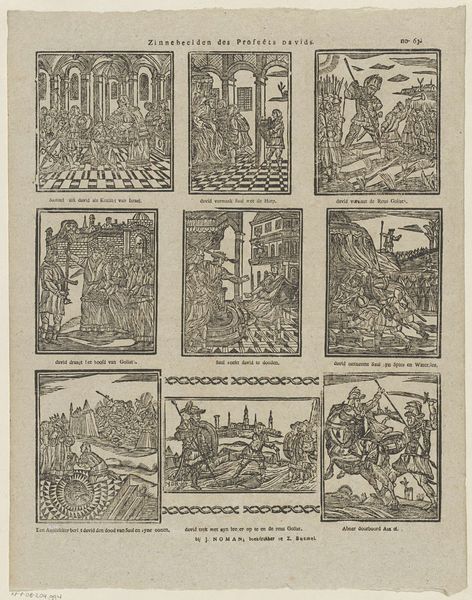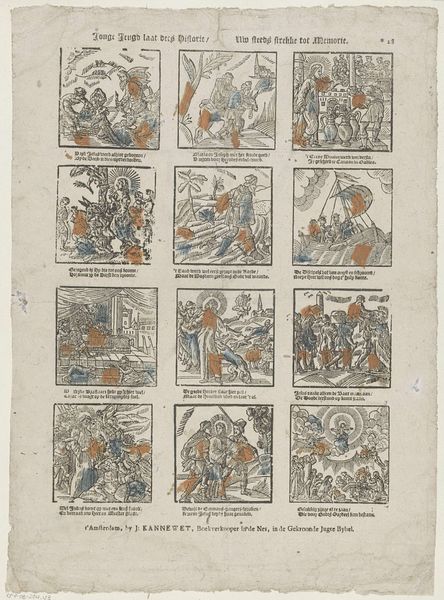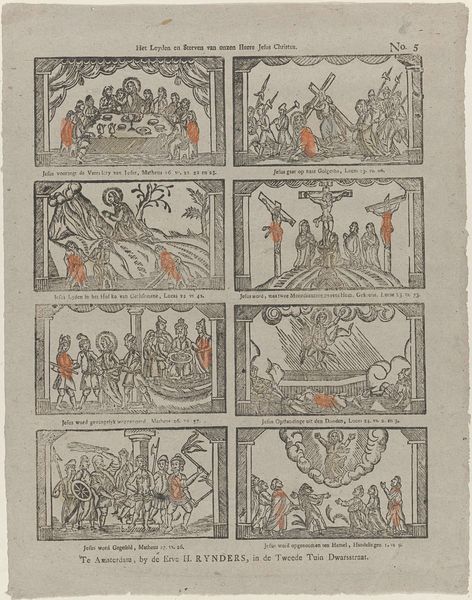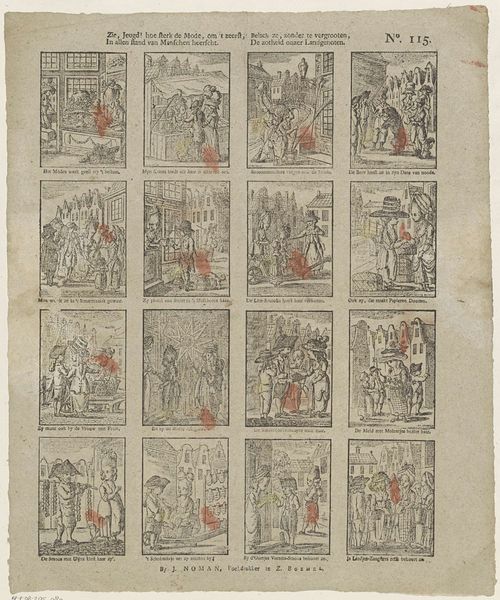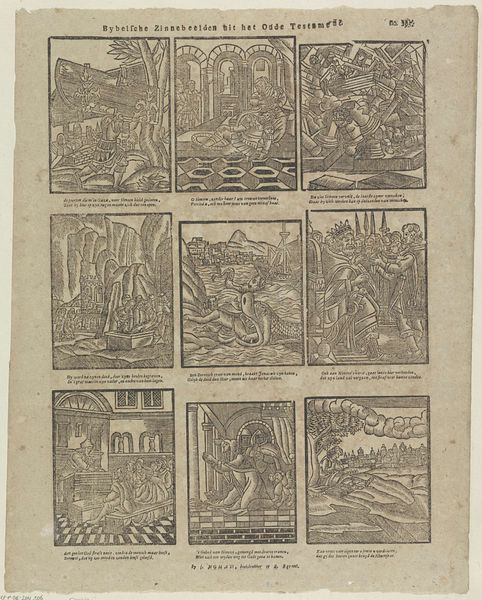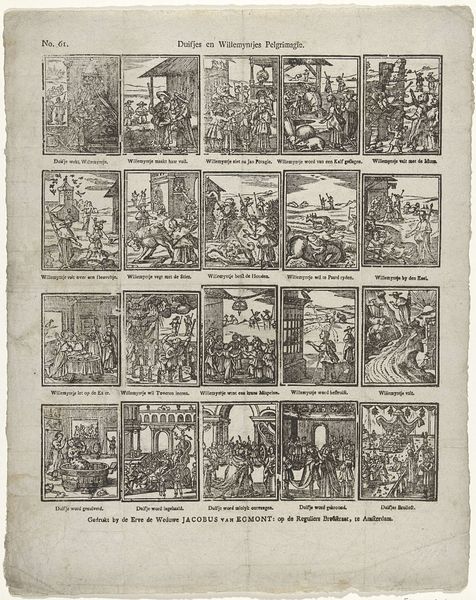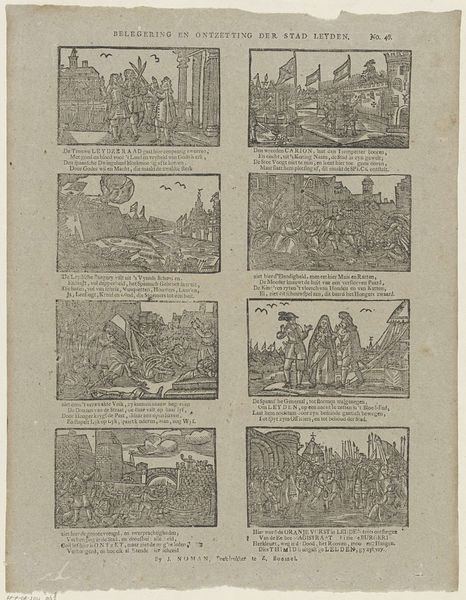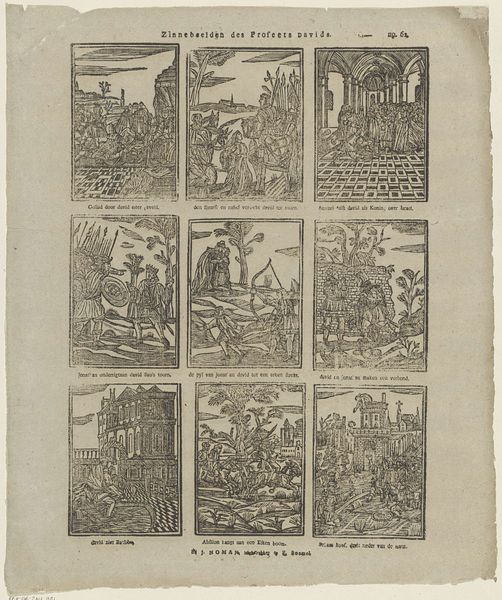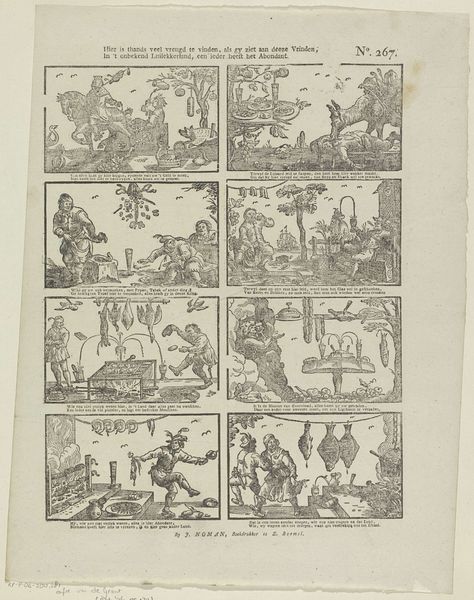
print, paper, woodblock-print, woodcut
#
medieval
#
narrative-art
#
dutch-golden-age
# print
#
figuration
#
paper
#
woodblock-print
#
woodcut
#
history-painting
Dimensions: height 410 mm, width 310 mm
Copyright: Rijks Museum: Open Domain
Curator: This engaging woodcut is titled "Bybelsche Figuuren des Ouden Testaments," or "Biblical Figures of the Old Testament," crafted between 1739 and 1786. Jan van Lee, a book and paper seller, printed this work in Haarlem. My initial thought zeroes in on its serial composition. Editor: Immediately, I'm drawn to the visual rhythm. The composition feels like a graphic novel page before graphic novels, right? These segmented stories feel punchy and dramatic, even if they're a bit…stiff. Curator: "Stiff" is a good word. Look closely at the deliberate lines and blocky forms; they speak to the labor-intensive process of woodcut printing. This isn’t about painterly illusion but rather mass production and dissemination of biblical narratives. The materials are paper and wood, readily available resources which meant wider consumption. Editor: True. And yet, the hand-coloring—a touch of orange in key places like crowns and flames—makes me wonder if each sheet received individual attention, blurring the line between craft and mass-produced image. The stories jump out, scenes of what looks like battles, prayer, and general biblical mayhem. Curator: Exactly! The Dutch Golden Age saw the printing press democratize images and biblical themes were frequently appropriated by the masses. Each panel functions as a propaganda tool, designed to teach moral lessons while re-entrenching particular sociopolitical codes and structures of authority. Note that Van Lee himself was a book seller which provides context to why the artist created the woodcut prints. Editor: It's a powerful snapshot into how information—visual and theological—was distributed. It makes you realize how images create society in subtle, manipulative, and yet creative ways. Curator: Indeed. It illustrates the fascinating tension between artistic expression, mass production, and social control that art can perform and exert in this historical moment. Editor: In short, a deceptively simple work holding centuries of rich sociohistorical dialogue and depth. Curator: Absolutely, making us consider that its role transcends the purely religious sphere, opening discussions around economy, culture, and accessibility during the 17th and 18th centuries.
Comments
No comments
Be the first to comment and join the conversation on the ultimate creative platform.
